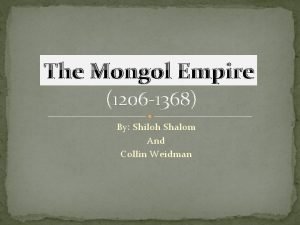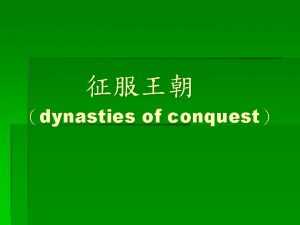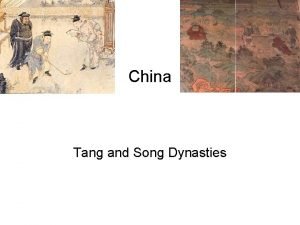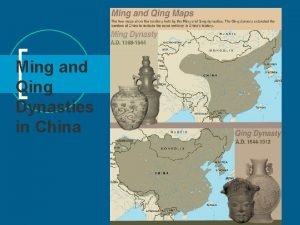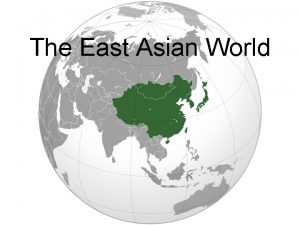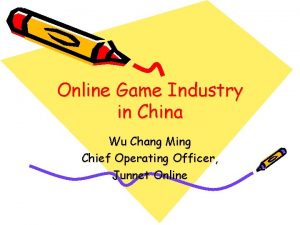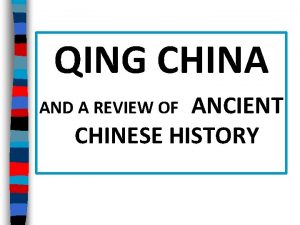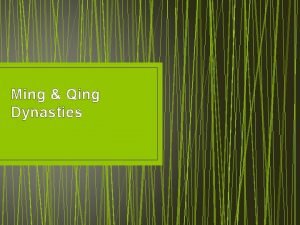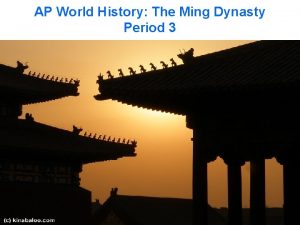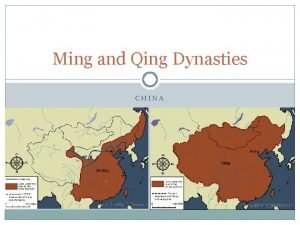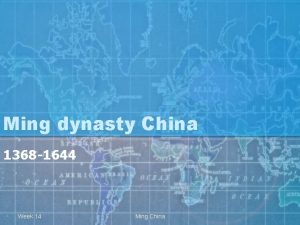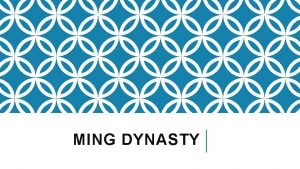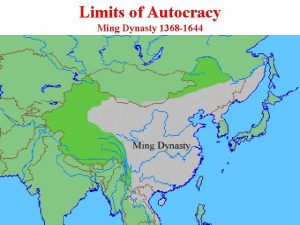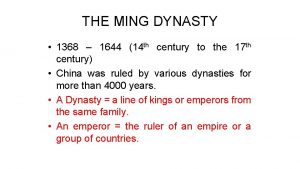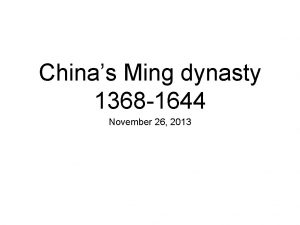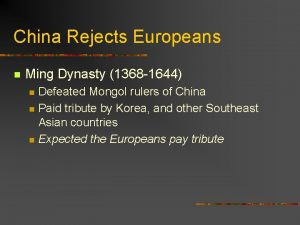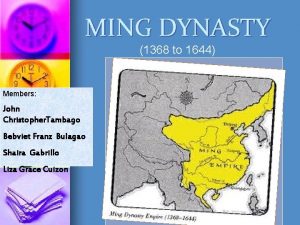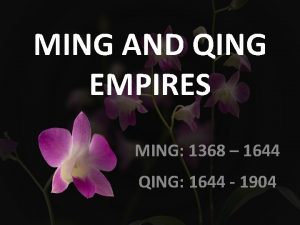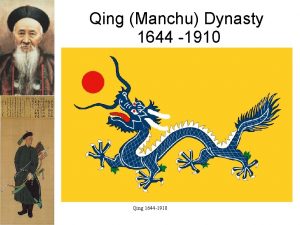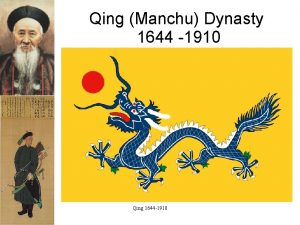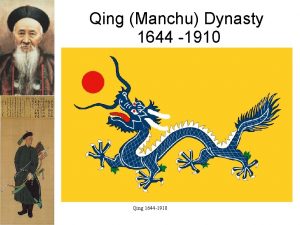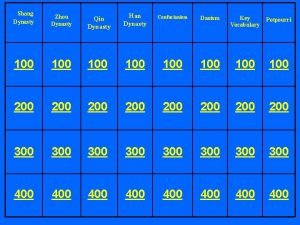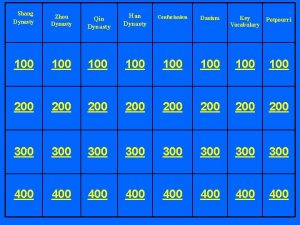Ming Dynasty 1368 1644 Founding of the Ming















- Slides: 15

Ming Dynasty 1368 -1644

Founding of the Ming dynasty founded by Zhu Yuanzhang Originally a peasant Expels Mongols as leader of the rebel group called the Red Turbans Takes name Hongwu become emperor in 1368 Force Mongols north of the Great Wall


Another Scholarly-Gentry Revival Hongwu, like the Han, restores scholarly gentry to high offices Imperial schools and examination system restored

Reforms transferred powers of the chief minister to the emperor Honesty, loyalty, & discipline was expected from officials Bureaucrats guilty of corruption or incompetence were publically beaten Emperor’s wives were only allowed to come from modest families off set power plays from high ranking families Limited number of eunuchs to powerful positions

A Return to Scholarly-Gentry Social Dominance promoted public works and aimed to improve lives of the common people Gentry households grew in power as landlord families buy up peasants land Women were confined & bearing male children was stressed Youth subordinate to elders


An Age of Growth Importation of American crops = population growth Population grew from 80 -90 million to 300 million from 14 th -17 th centuries Chinese manufactured goods in high demand Ceramics, textiles, etc. . Macao & Canton only places Europeans were officially allowed Ming prosperity was reflected in the fine arts Innovations in literature Woodblock Many printing high class individuals continued the practice of foot binding.


An Age of Expansion: The Zheng He Expeditions 1405 -1423 7 major overseas expeditions including: Persia Indian Coast African Initial Coast fleet contained 62 ships Columbus Da only had 3 in 1492 Gama only had 4 in 1498 Chinese had the capacity to expand on a global scale at least a century before the Europeans


Chinese Retreat and the Arrival of the Europeans Overseas Ming trade limited in 1390 China moves toward isolationism Europeans Drawn probe the globe to the Middle Kingdom Franciscans and Dominican missionaries try to convert commoners Jesuits try and convert elites


Ming Decline and the Chinese Predicament Later rulers incompetent in holding a highly centralized, absolutist structure Floods, Some droughts, & famine rage lands sell children into slaver Imjin War (1592 -1598): war between China, Korea, and Japan. Precipitates Last the decline of the Ming emperor, Chongzhen, kills himself to avoid capture and the dynasty is overthrown in 1644

Manchu Invasions In the summer of 1644 the Manchus invaded China and established a new Dynasty called the Qing. The Manchus were from northeastern China (a regions known as Manchuria) Took the Manchu 40 years to conquer all of China, Taiwan, parts of Mongolia, and Central Asia
 Shiloh shalom
Shiloh shalom Indochine
Indochine 1368-1271
1368-1271 Ming and qing dynasty venn diagram
Ming and qing dynasty venn diagram Spice t
Spice t Ming dynasty
Ming dynasty How did the ming dynasty restore chinese rule to china?
How did the ming dynasty restore chinese rule to china? Rise of the ming dynasty
Rise of the ming dynasty Ming dynasty game online
Ming dynasty game online Ming dynasty trade routes
Ming dynasty trade routes Mingoch
Mingoch Qing dynasty location
Qing dynasty location Ming dynasty social hierarchy
Ming dynasty social hierarchy Ap world
Ap world Qing dynasty location
Qing dynasty location Admixtures
Admixtures
